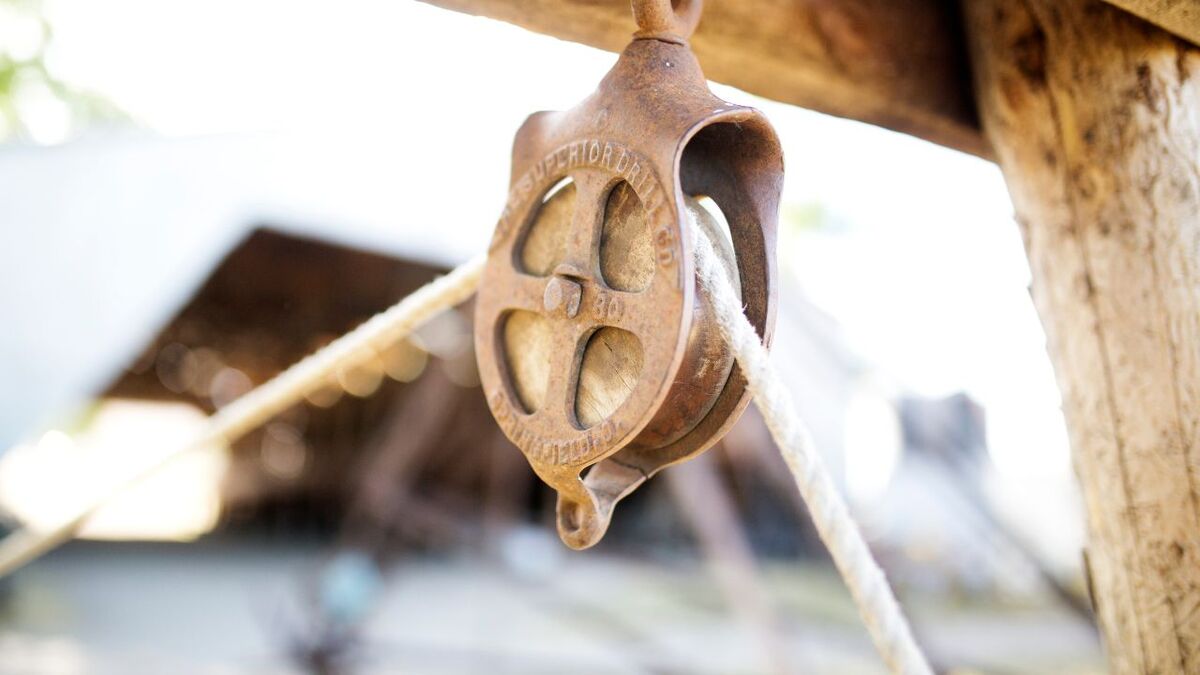
pulley
Nomen
Meaning
A pulley is a simple machine that consists of a wheel with a groove and a rope or cable that runs through it. In the context of survival, bushcraft, wilderness, camping, hiking, and outdoor activities, a pulley can be a valuable tool for various tasks. It allows you to create mechanical advantage by reducing the amount of force needed to lift or move heavy objects. Whether you need to hoist supplies up a tree, set up a shelter, or create a makeshift elevator system, a pulley can make your life easier in the great outdoors.

Examples
„I love using a pulley when I'm out in the wilderness. It makes it so much easier to hoist heavy objects up into the trees.“
„During our survival training, we learned how to create a makeshift pulley system using ropes and branches. It was a game-changer for moving our gear across difficult terrain.“
„My friend and I were building a shelter in the woods, and we used a pulley to raise the heavy logs into place. It saved us a lot of time and energy.“
„When I go camping, I always bring a pulley with me. You never know when you'll need to lift something heavy or create a mechanical advantage.“
„I recently watched a documentary about mountaineering, and they used pulleys to help them navigate steep cliffs and crevasses. It was fascinating to see how they utilized this simple tool in such extreme conditions.“
Origin
The word "pulley" originates from the Latin word "pulleyus," which means "small wheel." The concept of using a wheel and rope to lift heavy objects dates back to ancient times, with evidence of pulley systems found in ancient Egypt and Mesopotamia.
Over the centuries, pulleys have been used in various applications, including construction, transportation, and even in simple machines like well buckets. The design and functionality of pulleys have evolved over time, with advancements in materials and engineering techniques.
Today, pulleys are commonly used in industries such as manufacturing, mining, and construction, as well as in everyday objects like window blinds and gym equipment. They provide a mechanical advantage by distributing the weight of an object over multiple ropes and wheels, making it easier to lift or move heavy loads.
Synonyms
Block and tackle, Sheave, Wheel, Roller, Hoist, Winch, Snatch block, Rope block
Antonyms
Push, Pull
Relatives
Rope, Mechanical advantage, Lifting, Hoisting, Rigging, Block and tackle, Mechanical device
Historical and cultural importance
A pulley is a simple machine that has been used for centuries in various cultures around the world. Its historical and cultural relevance lies in its ability to make work easier by reducing the amount of force needed to lift or move heavy objects.
In ancient Greece, pulleys were used in construction and engineering projects. The Greek mathematician Archimedes is credited with inventing the compound pulley system, which allowed for even greater mechanical advantage. This innovation revolutionized the way heavy loads were lifted and transported.
In medieval Europe, pulleys were commonly used in the construction of cathedrals and castles. The large stone blocks used in these structures were too heavy to be lifted by human strength alone, so pulleys were employed to distribute the weight and make the task more manageable.
In Asian cultures, pulleys have been used for centuries in traditional fishing techniques. Fishermen would attach pulleys to their boats and use them to hoist heavy nets or traps out of the water. This method allowed for a more efficient and productive way of catching fish.
Today, pulleys continue to be used in a wide range of applications, from industrial machinery to rock climbing equipment. Their historical and cultural significance serves as a reminder of the ingenuity and resourcefulness of our ancestors, who developed these simple machines to overcome physical challenges and improve their quality of life.
More information about the term pulley
What is a Pulley?
A pulley is a simple machine that consists of a wheel with a groove in its circumference and a rope or cable that runs through the groove. It is used to change the direction of a force and make it easier to lift or move heavy objects. Pulleys have been used for centuries and are an essential tool in various industries, including construction, transportation, and even in outdoor activities like rock climbing and sailing.
How Does a Pulley Work?
The basic principle behind a pulley is that it reduces the amount of force needed to lift or move an object. When you pull on one end of the rope, the pulley redirects the force in a different direction, allowing you to lift the object with less effort. The more pulleys you have in a system, the easier it becomes to lift heavy loads.
Types of Pulleys
There are three main types of pulleys: fixed, movable, and compound pulleys.
A fixed pulley is attached to a stationary object, such as a ceiling or a beam. It changes the direction of the force but does not provide any mechanical advantage. However, it can be useful for changing the direction of the force or for lifting objects to a higher level.
A movable pulley is attached to the object being lifted. It moves along with the load, providing a mechanical advantage. With a movable pulley, you only need to exert half the force to lift the object.
A compound pulley consists of both fixed and movable pulleys. It offers the greatest mechanical advantage and is commonly used in systems where heavy loads need to be lifted.
Applications of Pulleys
Pulleys have a wide range of applications in various industries and activities. In construction, pulleys are used in cranes and hoists to lift heavy materials and equipment. In transportation, pulleys are used in vehicles like cars and bicycles to transfer power from the engine to the wheels. In rock climbing, pulleys are used in hauling systems to lift climbers or equipment. In sailing, pulleys are used in rigging systems to control the sails and adjust their position.
Conclusion
Pulleys are simple yet powerful machines that make it easier to lift and move heavy objects. They have been used for centuries and continue to be an essential tool in various industries and outdoor activities. Understanding how pulleys work and the different types available can help you utilize them effectively in your own projects and adventures.
Back to overview

